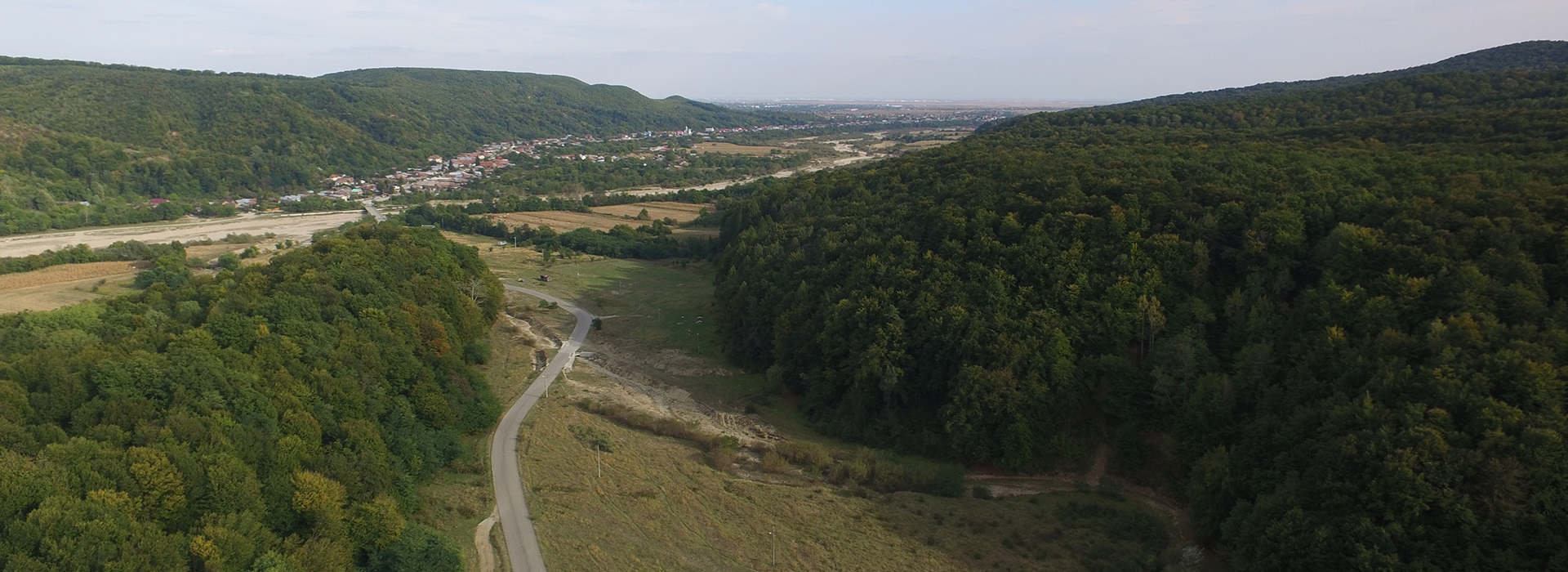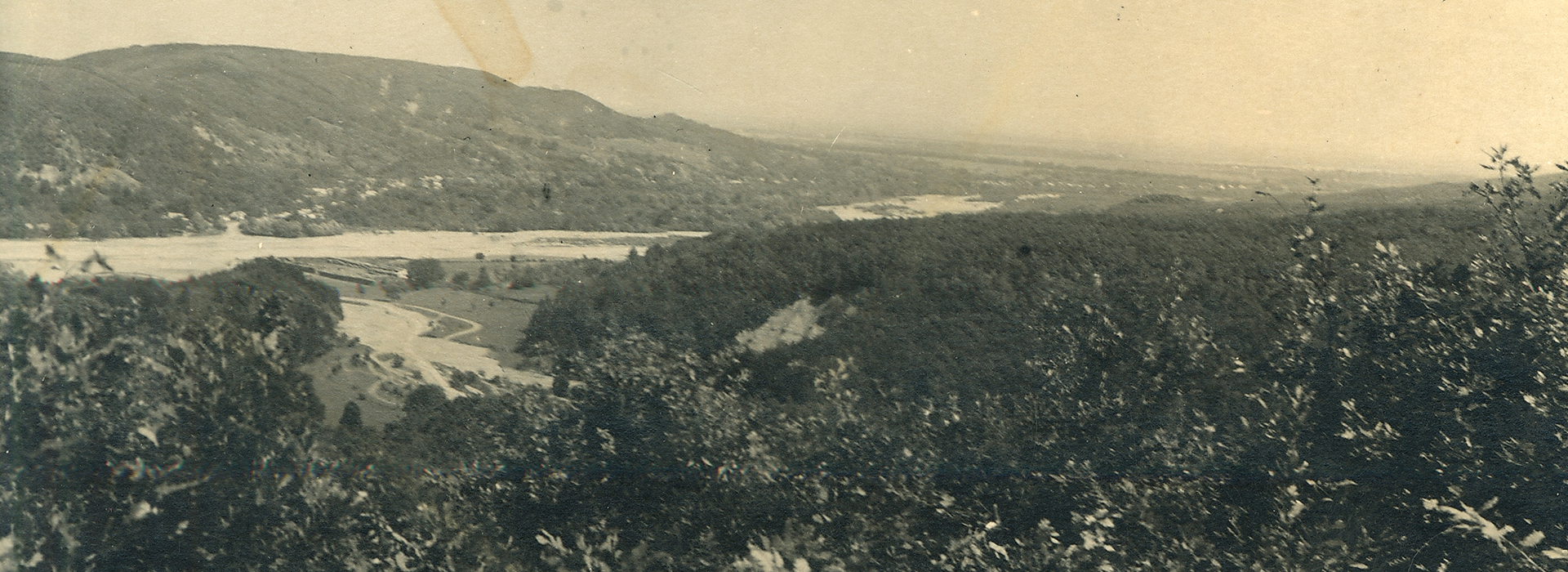 2017
2017
 1923
1923
Satul Banului, the gateway to the picturesque valley of Provita, is the first village on the banks of the Provita river, which reminds us of the atmosphere of the hill and mountain villages of the past.

Satul Banului is documented in 1526, along with Magurenii Stolnicesei Village. It is the most picturesque area of today’s Magureni commune and developed until 1897 as the village of Magurenii Banului.
It is a hilly area, full of forests, meadows and springs. The village was formed at the intersection of two extremely important commercial roads, both dating back to the Daco-Roman period. The most important road was the Commercial Road that the Dacians used to transport salt from Gura Ocnitei through Iedera and further to Breaza. This road was part of the “Silk Road”. The second road, perpendicular to the first, appeared with the closure of the commercial road connecting Transylvania to Wallachia through Tabla Butii point and the development of the Prahova Valley Road. The shortest connection between Brasov and Wallachia, the Danube and the Black Sea was through the Prahova Valley, but until 1787 – 1791 when the Austrians were in war with the Turks and built a wide road, the transport was made on nine trails. None of these trails was practicable with the cart, and the transport of goods was in the form of animal saddle bags. All nine footpaths were leaving the same point, Timisul de jos, and arrived in the same place, Comarnic. From Comarnic, the road continued on the left side of the Prahova river to Campina where the Customs office was. For those who wanted to bypass the customs office, and there were a few, the Valley of Provita was the best alternative. After the traders arrived on the left bank of Prahova and left Comarnic, they passed over the water to Gura Beliei, the Valley of Tarsei, and from there they went down the Provita Valley until they intersected with the commercial road of Targoviste. Another important commercial road that was bypassing the customs, but this time for the merchants who left Rasnov was Rasnov-Meghes-Paduchiosu-Gurguiatu-Talea-Valea Tarsei-Valea Provitei-Filipesti. Virtually everyone who bypassed the customs coming or going to Transylvania was passing through Satul Banului. At the intersection of these roads, extremely important in the medieval period and later, a very beautiful and very large inn was built. The importance of this inn was so great due to its positioning precisely at the meeting of the plains with the mountain area, where the merchants exchanged carriages and merchandise.

A fair was held in front of this inn. All traders who met at this intersection of roads were selling their products and thus formed a big and important fair. Around this inn and these commercial roads, it easily started to develop on the western slope, Satul Banului.
After the Middle Ages, the village descended from the hill to its current location, rolling alongside the Provita Riverbed.
During the Second World War it was a very active military area, the village having several antiaircraft defense points on its territory, defending the first refinery in the world, the Roman Star in Campina.
The area is rich in natural deposits, thermal waters, salty waters and, last but not least, oil, being one of the few areas in the country dotted on the map of natural oil wells in the Petroleum Museum in Ploiesti. Basically, as many of our grandparents said, there were oil fountains in the village where they went and took oil by the bucket, just as the water needed in the household. Householders are specialized in various crafts, from carpentry to lime powder production. The most skilled carpenters, wheel makers, were in Satul Banului.
Satul Banului is also an area rich in extremely tasty forest mushrooms. Due to the local gastronomy rich in forest mushroom recipes and the fact that the locals went almost all year round with mushrooms for sale in the big cities, the villagers received in time the name “buretari”.
Last but not least, the people in the village are worthy people who knew how to save up enough money to build the most beautiful households, but they also knew how to have fun, the village having a great number of taverns in the interwar period .

The main tavern of the village was the rule of Ghita Stan Dobre and was located in the center of the village, at the intersection of the two most important roads in the village. It was a shop and the dance hall and salon. There were always pretzels and pickles on the tables in the salon. Every autumn when it was the time to prepare the pickles in the courtyard of Ghita Stan Dobre was a great deal of agitation, pickles were put in very big barrels. For the great hollydays, the Holy Easter, St. Peter and Saint Mary, the courtyard of Ghita Stan Dobre’s court was open. The interior of this courtyard was similar to a small fair. You were attracted to the barbecue full of various types of meat or the bowling alley, the crowd of small merchants who were showing their products – temptations especially for children. The children could ride a “scranciob”, consisting of four double stools circling a shaft, moved by four men, and people could dance or eat donuts as big as a plate. The biggest crowd during holiday days consisted of the children waiting to occupy a seat in the “Scranciob”. When they were out of money, the children ran home to ask for more money or steal eggs they brought as a payment for the fun ride.

The Satul Banului Guesthouse is located on the land inherited from our great-grandfather Ghita Stan Dobre, famous innkeeper in the village and great manager of exploitation parquet. The house is built in the local architectural style, using exclusively architectural elements and building techniques in the area from the old age, as well as many materials recovered from the old houses, mounds and old stables of the village.
The Guesthouse tries to bring us into the authentic Romanian atmosphere of the households of our ancestors who lived on these hills, free peasants, worthy, skillful and wealthy. The house is situated in the middle of a plum orchard, just as our great-grandfather Ghita Stan Dobre had big plantations of plumtrees in order to produce plum brandy in the five boilers he owned.
A village legend says that one year he produced so much brandy that the draff reached the Danube. We are sure it didn’t reach so far but we all know that every legend has a trickle of truth.
Most of the objects present in our household belonged to our grandfather, such as the Gig which he used in the autumn to travel the entire Provita Valley to contract the purchase of plums, his horse riding saddle and his cane but also a part of the furniture, authentic furniture from salon, built approximately in 1894 and more objects from the village. So we tried to keep the authenticity of the Guesthouse by trying not to change the atmosphere with objects from other cultures or from other regions.